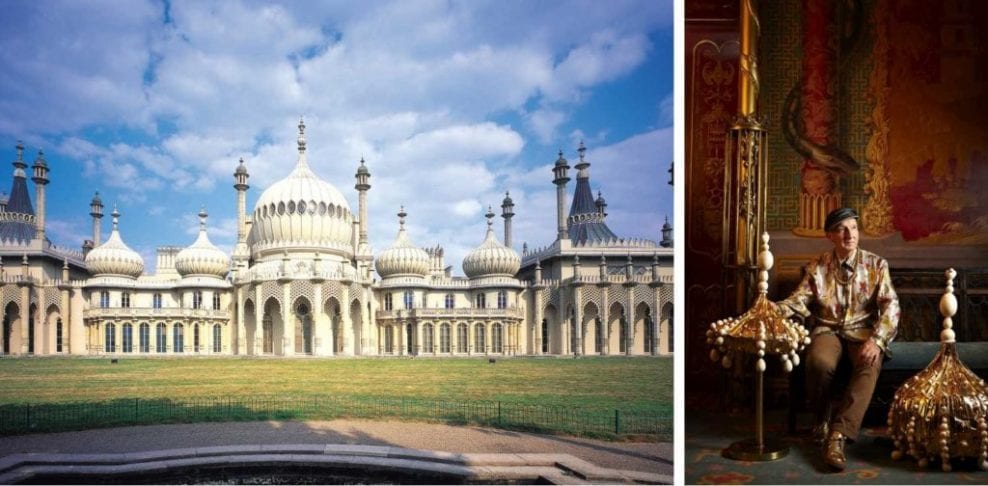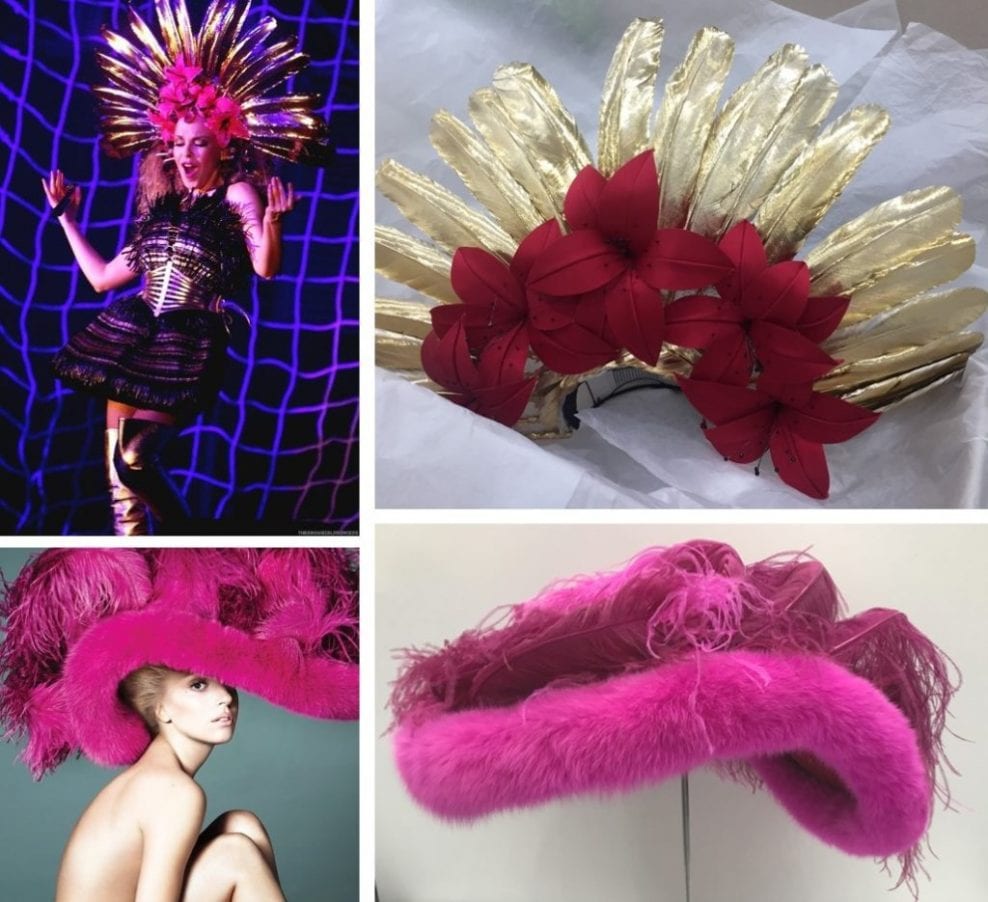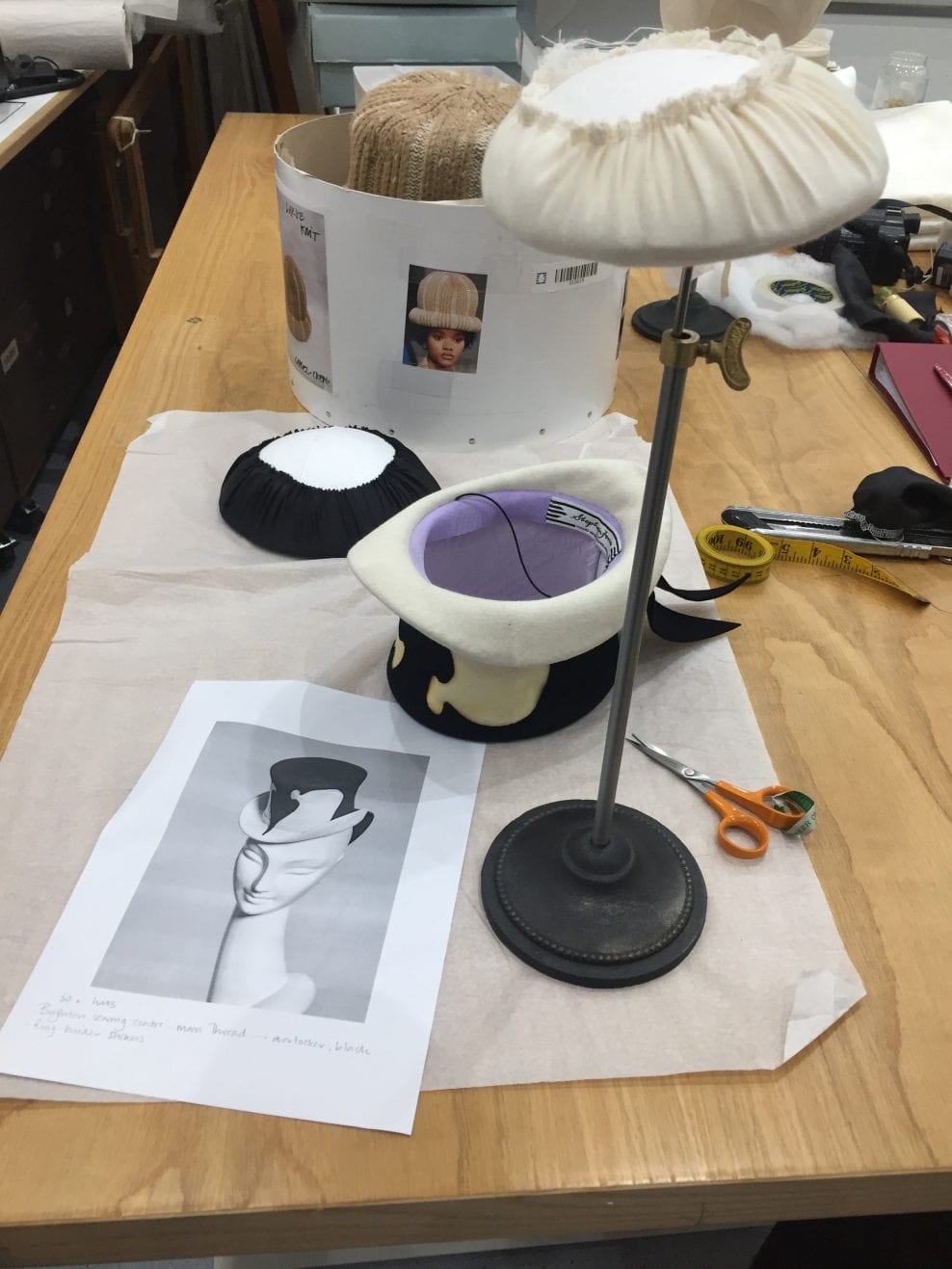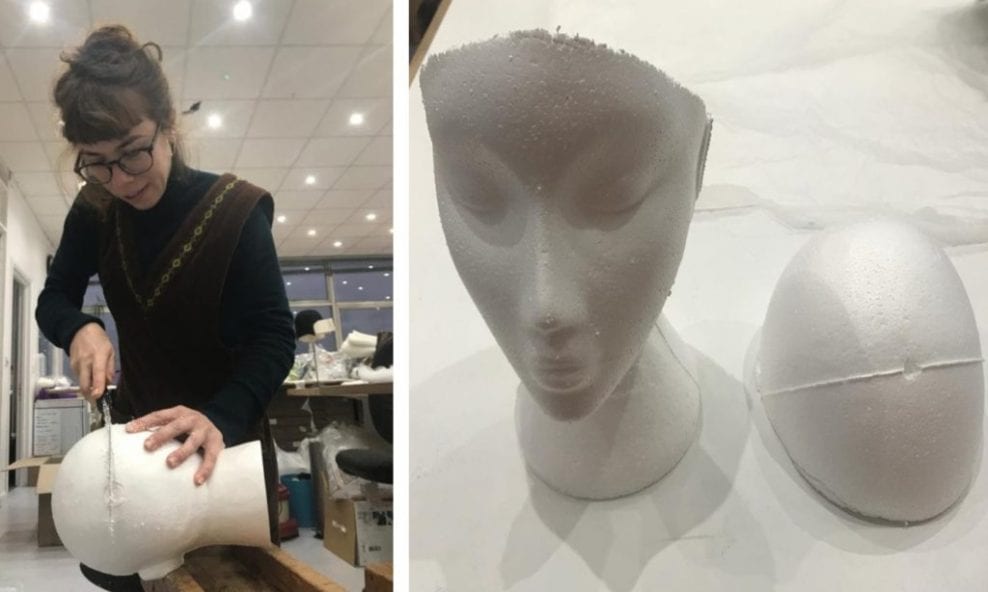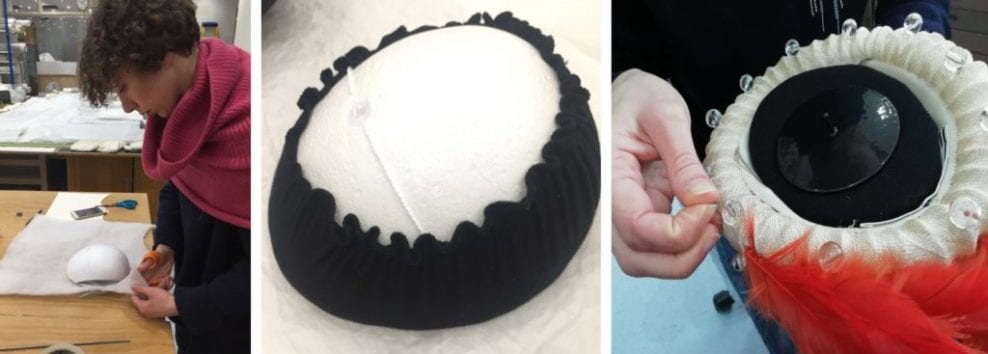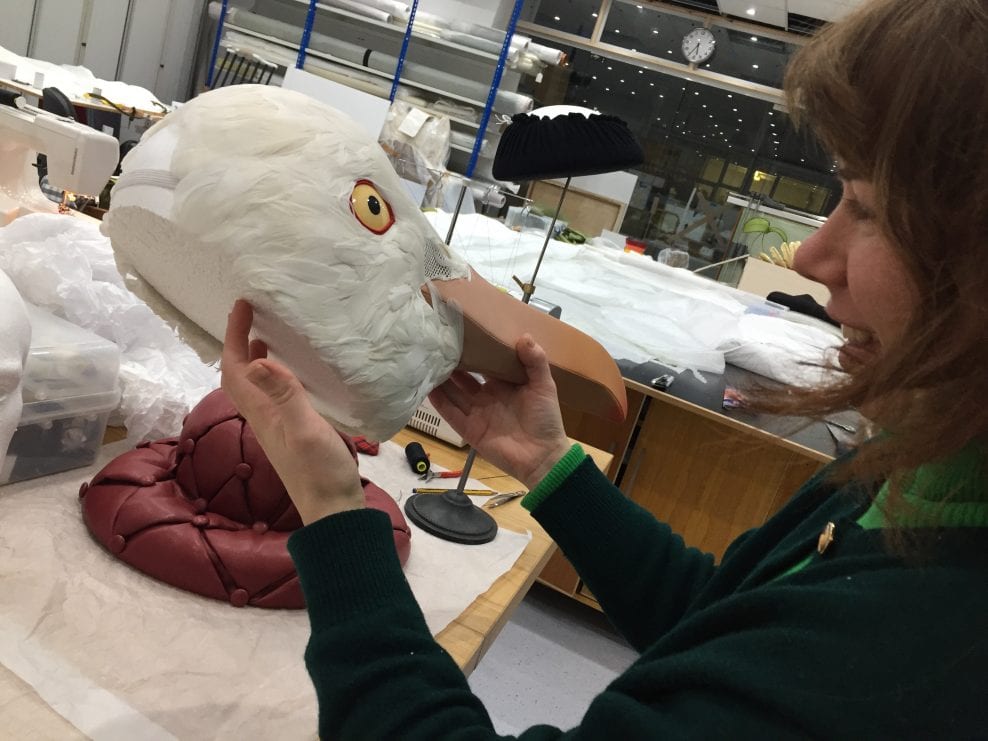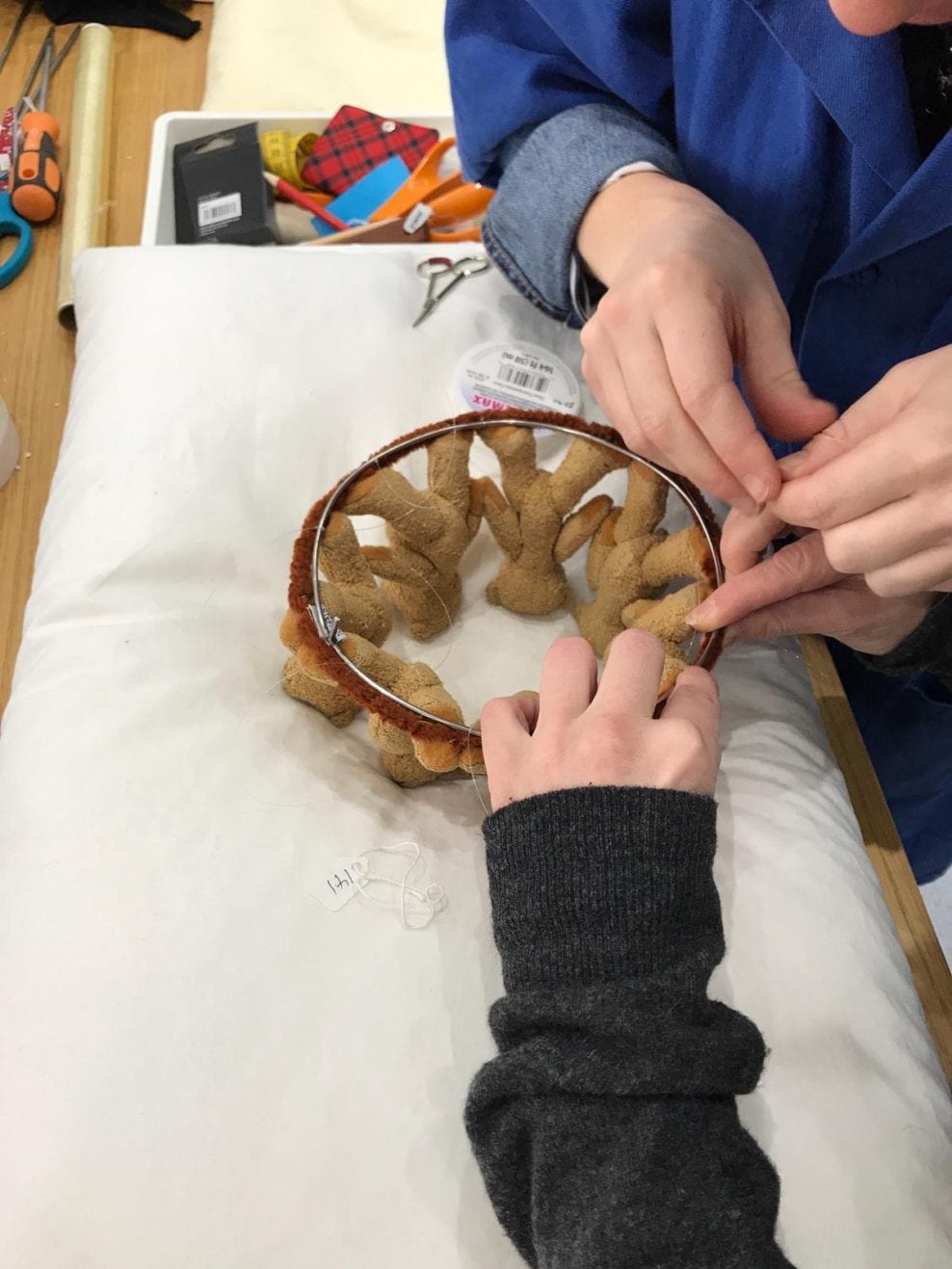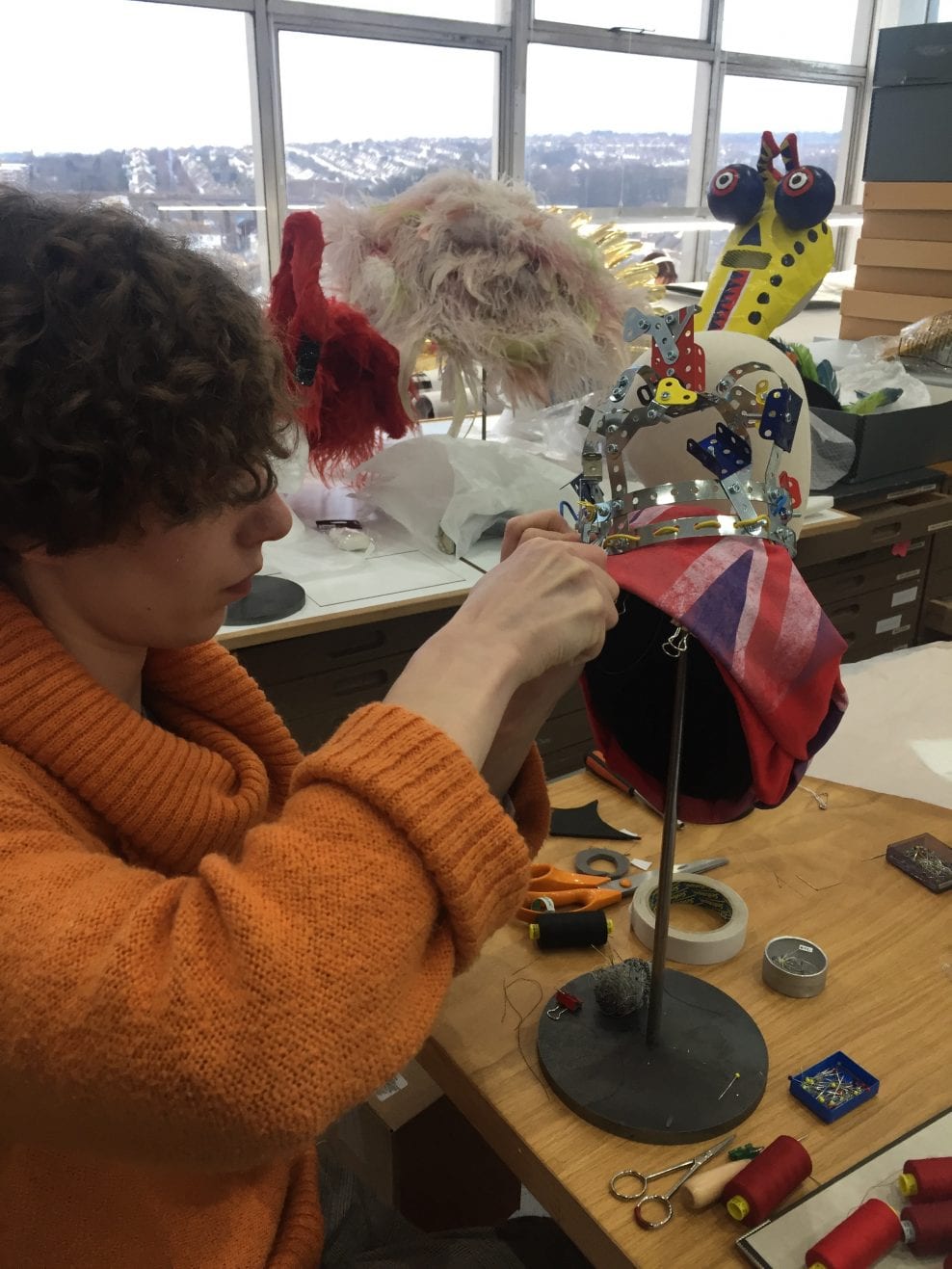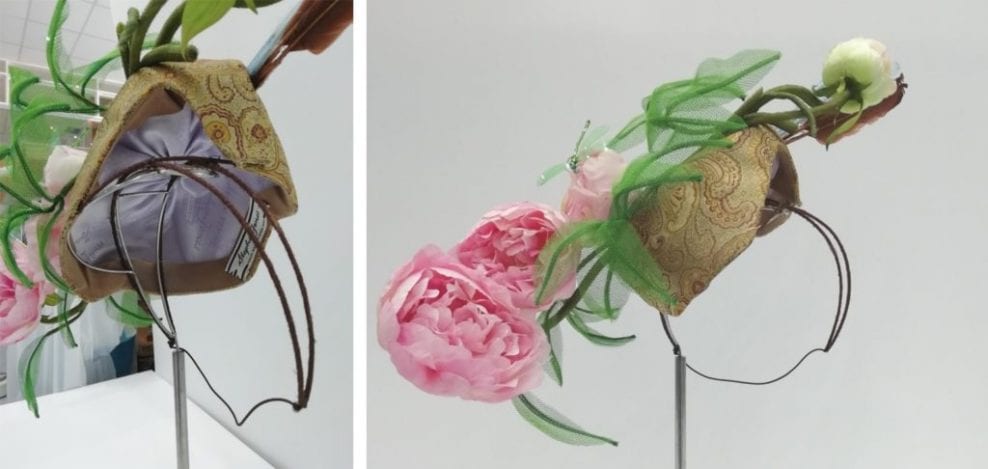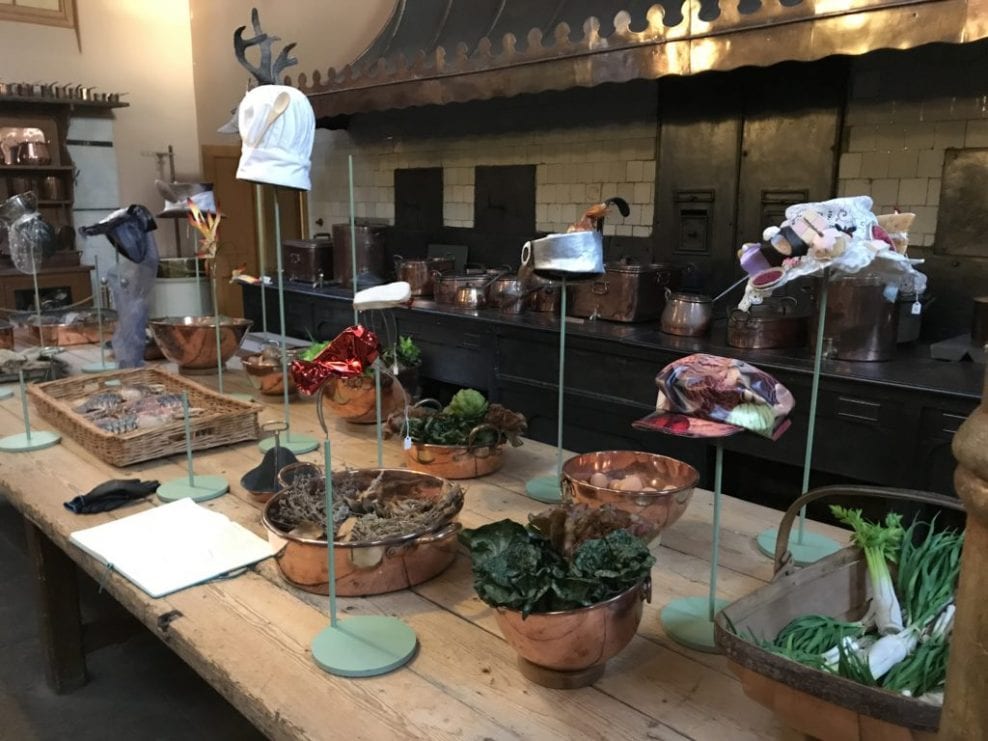Projects
Stephen Jones Hats at the Royal Pavilion
A project demonstrating creative and pragmatic mount making solutions for exhibitions and displays
‘Stephen Jones Hats at The Royal Pavilion’ was a fabulous exhibition that we were involved with in 2019. Like the hats that Jones creates, this exhibition was entirely unique, made to measure and tailored to it’s site. The curator Martin Pel and milliner Stephen Jones had been in discussion for many years about the exhibition concept which was originally conceived as a small spacial intervention consisting of 15 celebrity hats situated around the banqueting hall dining table, suggesting a sort of fantasy dinner party. A far cry from the some 160+ hats on open display plus nine full costumes scattered, draped and suspended from every corner of the historic palace that opened in February.
Due to uncertainty around the exhibition funding, our conservation and mounting work was not able to start until just before Christmas – only seven weeks before the exhibition was due to open. Our team quickly slotting into the multidisciplinary team put together by Brighton Pavilion and Museums. And we rose to the challenge of coming up with creative mounting solutions deliverable within the tight deadline and for a limited budget.
One such solution we devised was the use of polystyrene heads which many of the objects were mounted on. These were cheap, came in two sizes and provided the round shape needed to fill the crown of the hat without too much building up or carving. While we do not advocate using polystyrene for long term display the tight deadline and limited budget in combination with the short length of the exhibition run meant that we had to be creative with our materials and find quick fix solutions. The hat could be set on the polystyrene head at the required angle, drawn round and the polystyrene cut away as necessarily. The underside of the mount was then covered with a disc of card, a thin layer of polyester wadding and a top cover of black jersey secured with a drawstring to give a smooth finish and isolate the non conservation polystyrene from direct contact with the hats.
Mounts for hats with more elaborate crown shapes were made out of Fosshape®. Fosshape® is thermoactive polyester felt with a low melting point used for costume mounting, prop making, puppetry and more as it is easy to shape, stitch and cut. Invisible supports were made by casting the Fosshape® over a head form, heat-setting it with a steam iron and cutting away the excess, leaving a support to fit neatly inside the hat. This was particularly useful for the turbans which required a solid insert to prevent the turban from caving in but needed to remain inconspicuous.
The third group were mounts made out of acid-free card for the smaller objects, such as Rihanna’s party hat and the kite. Circles of acid-free card were covered with poly wadding and black jersey. All three of these mount types had a metal washer with bolt, set to the prescribed angle and powder coated black to slot into stands, both made by Mike Penwolf from Panotechnia, another creative company from our building with whom we formed a great partnership designing and producing bespoke mounts for each hat.
Finally, the fourth group of hats consisted of Alice bands, crowns and hats made from see-through materials. Mounts for these hats were made from stainless steel wire in a variety of thicknesses depending on the weight of the hat and its construction. Although the Alice band shape looks easy it was this group that were more complicated than expected. It took several fittings and bending sessions to get the ideal shape before the mounts were stitched and secured in place with clear nylon beading wire.
While we were already aware of the wide range of creative expertise available within our building, it is quite rare that so many of us combine together on the delivery of a single project. Almost everything produced for the exhibition, from printed material to metalwork, came from the New England House community (or within a half mile radius). Not only did we have the benefit of face to face communication but it meant that nothing had to travel far, saving time and money – and making good environmental sense too.
